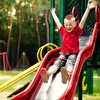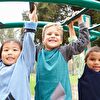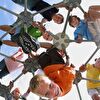The Self-Assessment is a tool that allows child and family serving organizations to identify what they are doing well and why as well as what they could improve on and how. Think of self-assessment as a great strategy for providing motivation and direction to your UWSF initiative. This strategy can work well when undertaken during the early stages of UWSF implementation, after your programs have begun, or even while they are underway. The self-assessment is a powerful tool to help organizations, including local United Ways, make significant strides in positive community impact.
The Center for the Study of Social Policy (CSSP) has designed various easy-to-use self-assessments (primarily for organizations that work with young children, but can be applied more broadly) consisting of:
- A powerful self-assessment tool composed of forms designed to help you evaluate specific practices as they pertain to each of the protective factors. Each form addresses a specific protective factor and can be completed in approximately 90 minutes. When you have finished completing the forms and submit them online you will receive reports compiling your answers. Once you have completed the online assessments you are ready to work with a team to create an action plan.
- A protective factors survey developed by the FRIENDS National Resource Center for Community-Based Child Abuse Prevention and the University of Kansas. This survey helps programs measure how the families they serve use the protective factors in their daily lives as well as identifies areas that need more focus.
- A confidential staff survey for programs using the Strengthening Families framework. This survey helps measure how Strengthening Families affects both the day-to-day work and the overall goals of specific programs.
The Strengthening Families Online Self-Assessment Package includes tools to help programs make small but significant changes in their day-to-day practice and help measure how the families they serve are modifying their behaviors and attitudes based on the protective factors.
A successful self-assessment requires program participants, including several parents and an atmosphere of openness and established trust to say what they need to say. You might think of using self-assessment questions as part of the orientation or training as a way of engaging participants and identifying strategic plans.





